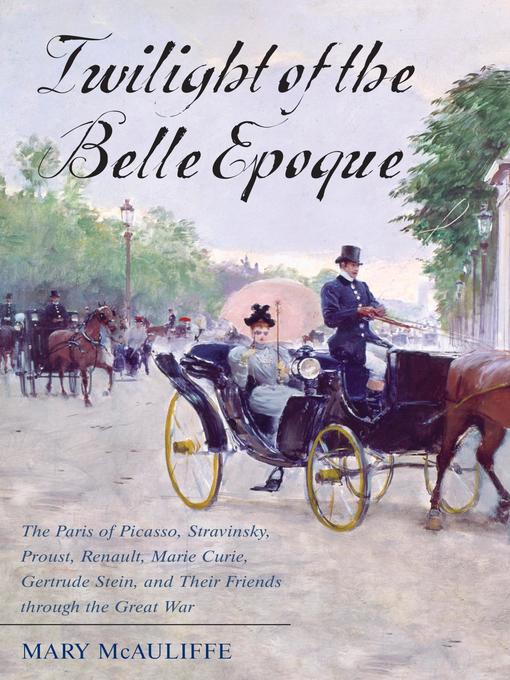
Twilight of the Belle Epoque
The Paris of Picasso, Stravinsky, Proust, Renault, Marie Curie, Gertrude Stein, and Their Friends through the Great War
کتاب های مرتبط
- اطلاعات
- نقد و بررسی
- دیدگاه کاربران
نقد و بررسی

December 23, 2013
After the Franco-German War of 1871â1872, Paris experienced a remarkable artistic, literary, and scientific surge in the midst of immense political and religious turbulence, reshaping worldviews to embrace rapid change and immortalizing the period's innovators. McAuliffe (Dawn of the Belle Epoque) revisits this vibrant, controversial era and weaves brief chronological snapshots of the eponymous figuresâplus others like Sarah Bernhardt and Ãmile Zolaâand their (often long-suffering) companions throughout her narrative. Visual artists receive the most biographical attention, illuminating the rise and fall of Matisse's Fauvism and Picasso's transformation into cubism, while the Curies' heartbreaking story of love for science and each other balances out the art colonies' fatalistic frivolity. McAuliffe tries to include too much into an eminently readable but overstuffed narrative; for instance, technological advances and the formative experience of Charles de Gaulle barely make an impression after impassioned descriptions of the robust exploits of Stein, Picasso, and Zola. For Paris, the Belle Epoque and its dazzling cultural movement resulted in a shining period whose inverse would soon be felt in the desolation and decimation of the Great War. Illus.

February 1, 2014
McAuliffe follows up her Dawn of the Belle Epoque: The Paris of Monet, Zola, Bernhardt, Eiffel, Debussy, Clemenceau, and Their Friends with this book taking readers forward a few decades. It's actually not so much a history of a time as a collection of biographies--over 30 of them--of early 20th-century French inventors, politicians, and artists. The author divides the book by year, with each chapter relating significant events in the life of the main subjects during that one year. Unfortunately, because the subjects did not necessarily know one another, or share any interests, each biographical segment is disconnected from the portions before and after it. Because 50 to 100 pages can separate the portions about a particular person, the reader may find it a challenge to keep track of any particular subject's life and will need to resort to the index. Nonetheless, McAuliffe has an eye for the evocative, using quotes--and salacious details--to bring these early 20th-century men and women to life, several of whom--Rodin, Zola, the Curies--were covered in her previous book (she orients readers in case they did not read that volume). The author excels at including material about women throughout. VERDICT Recommended for readers who enjoyed the previous volume and for biography junkies.--Jessica Spears, Monroe Coll. Lib., Bronx, NY
Copyright 2014 Library Journal, LLC Used with permission.

February 1, 2014
In her prior work, Dawn of the Belle Epoque (2011), historian McAuliffe recounted how Paris, reeling from the disasters of the Franco-Prussian War and the Paris Commune, reemerged as the glittering cultural center of Europe in the last two decades of the nineteenth century. During the so-called belle epoque, art, literature, and science bloomed in a creative outburst, led by a cast of innovative geniuses, including Zola, Monet, Rodin, and Renoir. In her follow-up, McAuliffe covers the period from 1900 to 1918. The cast of characters as well as the political and social milieu have changed somewhat, but cultural, scientific, and technological creativity continued to flourish. But as McAuliffe indicates, the epoch had its dark side, including the ongoing and increasingly vicious battles between monarchists and republicans, and Catholics versus secularists. The more prescient observers were haunted by the looming threat of a general European war. This is a fine tribute to an amazingly productive period in Parisian and world history.(Reprinted with permission of Booklist, copyright 2014, American Library Association.)

























دیدگاه کاربران